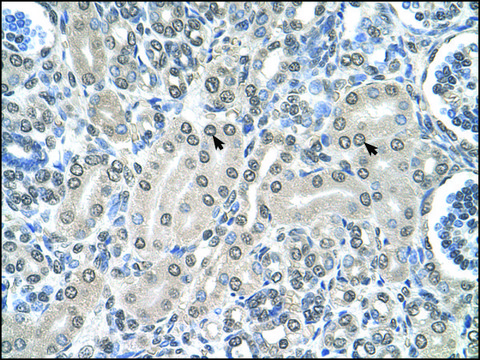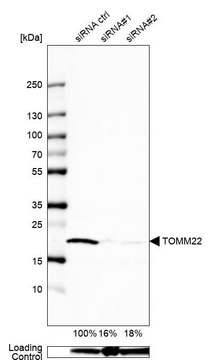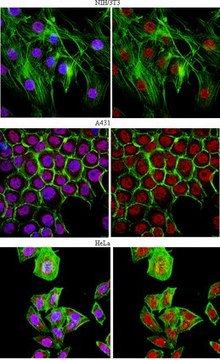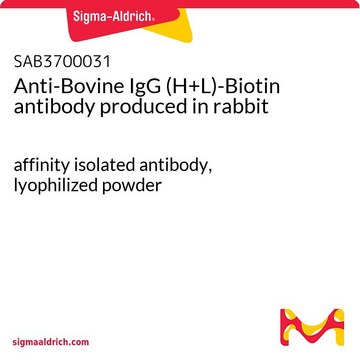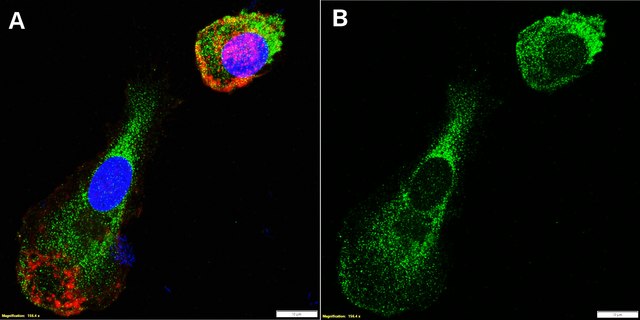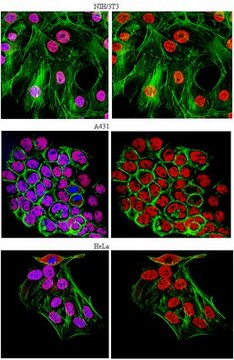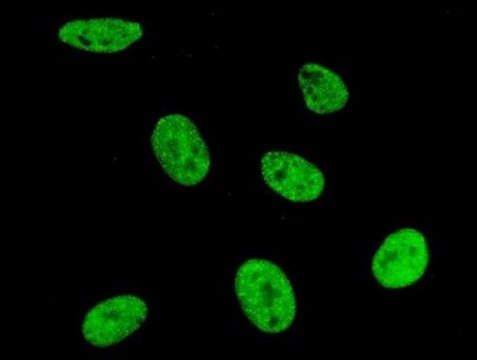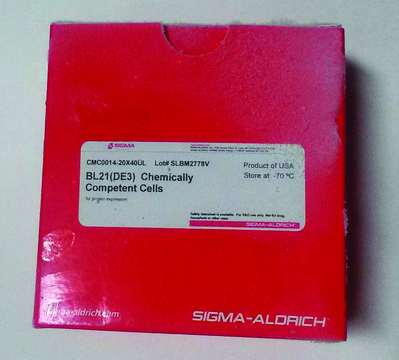推荐产品
生物来源
rat
偶联物
unconjugated
抗体形式
purified from hybridoma cell culture
抗体产品类型
primary antibodies
克隆
4H12, monoclonal
表单
buffered aqueous solution
分子量
~20 kDa
种属反应性
human, mouse, rat, hamster, monkey
浓度
~1.0 mg/mL
技术
immunocytochemistry: suitable
immunoprecipitation (IP): suitable
western blot: 1-2 μg/mL using HeLa or COS7 or CHO cell extracts
同位素/亚型
IgG2a
UniProt登记号
运输
dry ice
储存温度
−20°C
靶向翻译后修饰
unmodified
基因信息
human ... SNRPC(6631)
mouse ... Snrpc(20630)
rat ... LOC685273(685273)
一般描述
Monoclonal Anti-U1 snRNP C (U1C) (rat IgG2a isotype) is derived from the hybridoma 4H12 produced by the fusion of mouse myeloma cells (SP2) and splenocytes from a rat immunized with mouse U1C protein. Small nuclear ribonucleoprotein polypeptide C (U1C) is mapped to human chromosome 6p21.31.
The U1 snRNP complex contains the U1 snRNA molecule and the U1 snRNP specific proteins U1-70K, U1A and U1C, plus a common set of eight proteins, called Sm proteins U1A and U1-70K contain RNA binding domains and interact with naked snRNA on their own.
特异性
Monoclonal Anti-U1 snRNP C (U1C) recognizes human, monkey, mouse, rat, and hamster U1C.
免疫原
mouse U1C protein fusion protein
应用
Anti-U1 snRNP C (U1C) antibody, Rat monoclonal has been used for:
- immunoblotting
- immunofluorescence
- immunoprecipitation
- immunocytochemistry
生化/生理作用
The U1 small nuclear ribonucleoprotein particle (snRNP) has an important function in the early formation of the spliceosome, the multicomponent complex in which pre-mRNA splicing takes place. The binding of U1C to the U1snRNP particle is dependent on protein-protein interactions between U1C and U1-70K as well as U1C and the common Sm proteins.
U1A and U1−70K contain RNA binding domains and interact with naked snRNA on their own. In cultured HeLa cells, mutant U1C proteins that are not able to bind to the U1 snRNP do not accumulate in the nucleus, indicating that nuclear accumulation of U1C is due to incorporation of the protein into the U1 snRNP.
外形
Solution in 0.01M phosphate buffered saline, pH 7.4, containing 15 mM sodium azide
储存及稳定性
Store at -20 °C. For continuous use, store at 2-8 °C for up to one month. For extended storage, freeze at -20 °C in working aliquots. Repeated freezing and thawing, or storage in “frost-free” freezers, is not recommended. If slight turbidity occurs upon prolonged storage, clarify the solution by centrifugation before use. Working dilution samples should be discarded if not used within 12 hours.
免责声明
Unless otherwise stated in our catalog or other company documentation accompanying the product(s), our products are intended for research use only and are not to be used for any other purpose, which includes but is not limited to, unauthorized commercial uses, in vitro diagnostic uses, ex vivo or in vivo therapeutic uses or any type of consumption or application to humans or animals.
未找到合适的产品?
试试我们的产品选型工具.
储存分类代码
12 - Non Combustible Liquids
WGK
nwg
闪点(°F)
Not applicable
闪点(°C)
Not applicable
法规信息
常规特殊物品
历史批次信息供参考:
分析证书(COA)
Lot/Batch Number
SMN2 splice modulators enhance U1--pre-mRNA association and rescue SMA mice
Palacino J, et al.
Nature Chemical Biology, 11(7), 511-511 (2015)
Nuclear accumulation of the U1 snRNP-specific protein C is due to diffusion and retention in the nucleus
Gunnewiek J, et al.
Experimental Cell Research, 235(1), 265-273 (1997)
U1 snRNP protects pre-mRNAs from premature cleavage and polyadenylation
Kaida D, et al.
Nature, 468(7324), 664-664 (2010)
Interactome analyses revealed that the U1 snRNP machinery overlaps extensively with the RNAP II machinery and contains multiple ALS/SMA-causative proteins
Chi B, et al.
Scientific reports, 8(1), 8755-8755 (2018)
The splicing factor U1C represses EWS/FLI-mediated transactivation
Knoop LL and Baker SJ
Test, 275(32), 24865-24871 (2000)
我们的科学家团队拥有各种研究领域经验,包括生命科学、材料科学、化学合成、色谱、分析及许多其他领域.
联系技术服务部门

